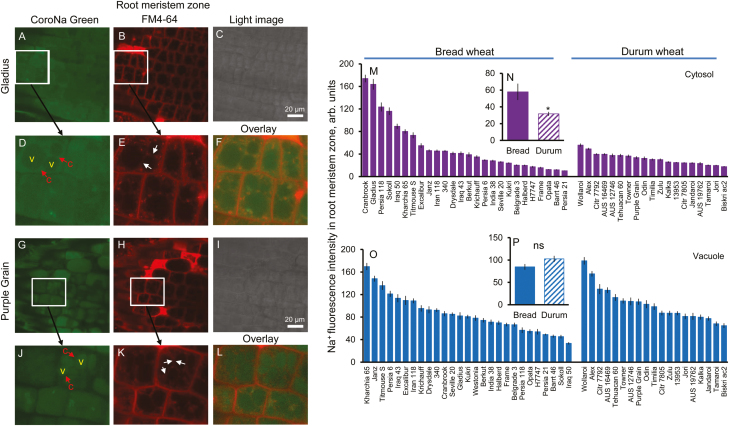Fig. 4.
Genetic variability of Na+ intensity in the cytosol and vacuole in the root meristem zone. (A and G) Representative images of root meristem zone cells stained with CoroNa Green dye in bread wheat Gladius (A) and durum wheat Purple Grain (G) cultivars. (B, H) and (C, I) The corresponding FM4-64 tonoplast staining and light images, respectively. (D–F) and (J–L) The representative area of Na+ staining in Gladius and Purple Grain, respectively. c, cytosol, v, vacuole. (M and O) Na+ content in the cytosolic (M) and vacuolar (O) compartments in the root meristem zone of 46 wheat varieties contrasting in their salinity tolerance quantified by the intensity of CoroNa Green fluorescence (arbitrary units). Mean ±SE (n=72–96 cells from at least six individual plants). (N and P) Averaged pooled values for Na+ intensity in the cytosol (N) and vacuole (P) in the root meristem zone for bread and durum wheat clusters. Mean ±SE [n=19 (durum wheat) and 27 (bread wheat)]. *Significant at P<0.05. Hydroponically grown 4-day-old wheat seedlings were treated with 100 mM NaCl for 72 h.

